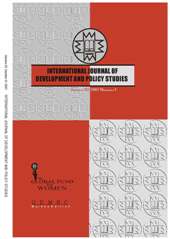A conformational study of proline derivatives
Abstract
From the study of the structures and molecular conformations of a number of proline derivatives, some conclusions were drawn. The widening effect of angle C-C'-N' is caused by steric repulsion between a hydrogen atom at C of the preceding prolyl residue with any other at either C or C of the pyrrolidine ring cis to it. This effect is influenced by the distance between the said hydrogen atoms: the nearer this distance is, the greater is the steric repulsion and the wider is the angle of steric repulsion. The ratio of the angle of steric repulsion to the distance between C and the following C (or C) cis to it is approximately 40 and 41 for peptides with trans and cis configurations, respectively. The torsion angle ranges for 1, 3, 4, and in these derivatives are widened more than usual. The highest vibration, which more often takes place at either the C or C of the pyrrolidine ring, does so not necessarily at the one that is puckered. A -relationship is established, for the determination of -helixity or collageneity, also in small peptides and amino acids that contain proline. The -relationship is versatile and gives about +180o and 180o for the two categories, respectively. The distance between the carbonyl and hydroxyl (or otherwise) terminal end atoms is minimal (2.2 ) and constant, for all peptides. The ratios of the angles at the carbonyl carbons (O'-C'-N') or (O'-C'-O') to this distance is also constant: 56 and 57 for the cis and trans confirgurations, respectively; i.e. a proline O'-C'-N'- (or O'-C'-O')-test, hereinafter called the CT-test, has been established for the determination of cis and trans configurations. It is also established in these proline derivatives, that whereas puckering takes place at C for the CS form, it does so at C for the C2 form.
(Received December 10, 2001; revised June 13, 2002)
(Bulletin of The Chemical Society of Ethiopia: 2002 16 (2): 199-206)
(Received December 10, 2001; revised June 13, 2002)
(Bulletin of The Chemical Society of Ethiopia: 2002 16 (2): 199-206)
DOI: http://dx.doi.org/10.4314%2Fbcse.v16i2.20943
Bulletin of the Chemical Society of Ethiopia. ISSN: 1011-3924





